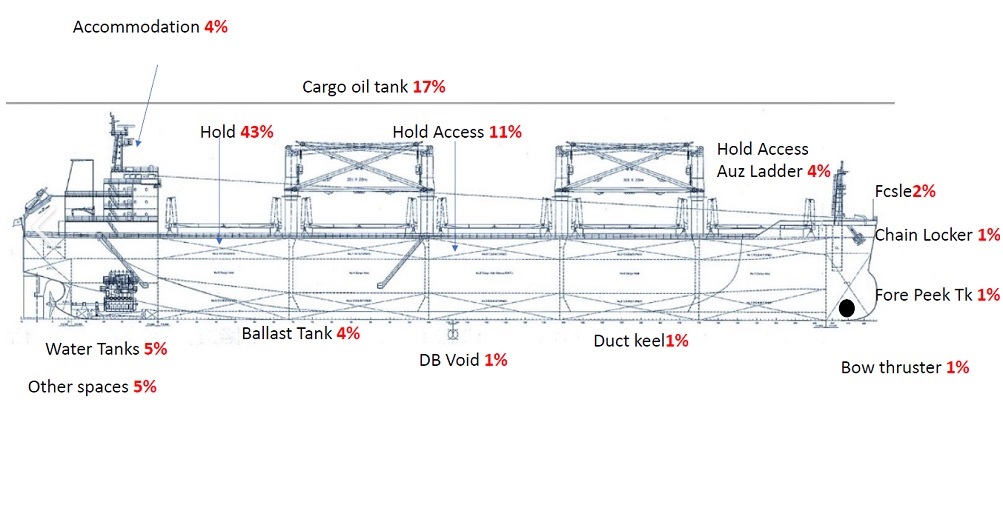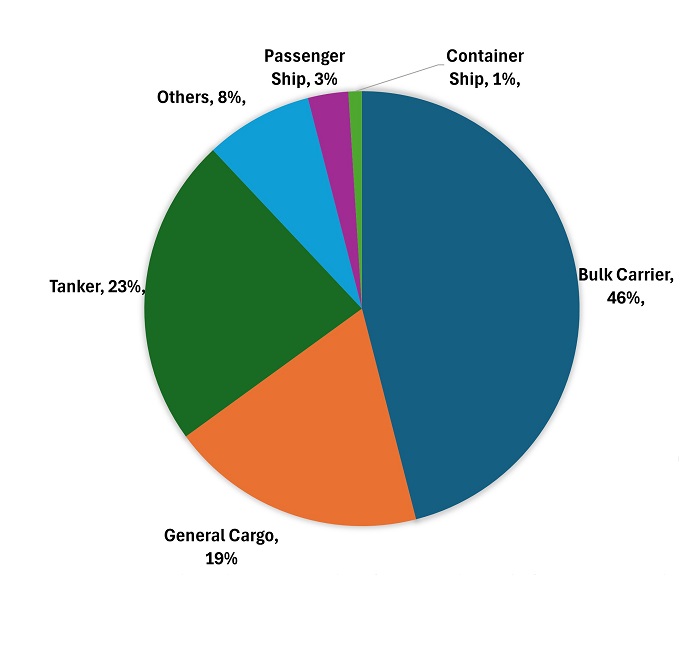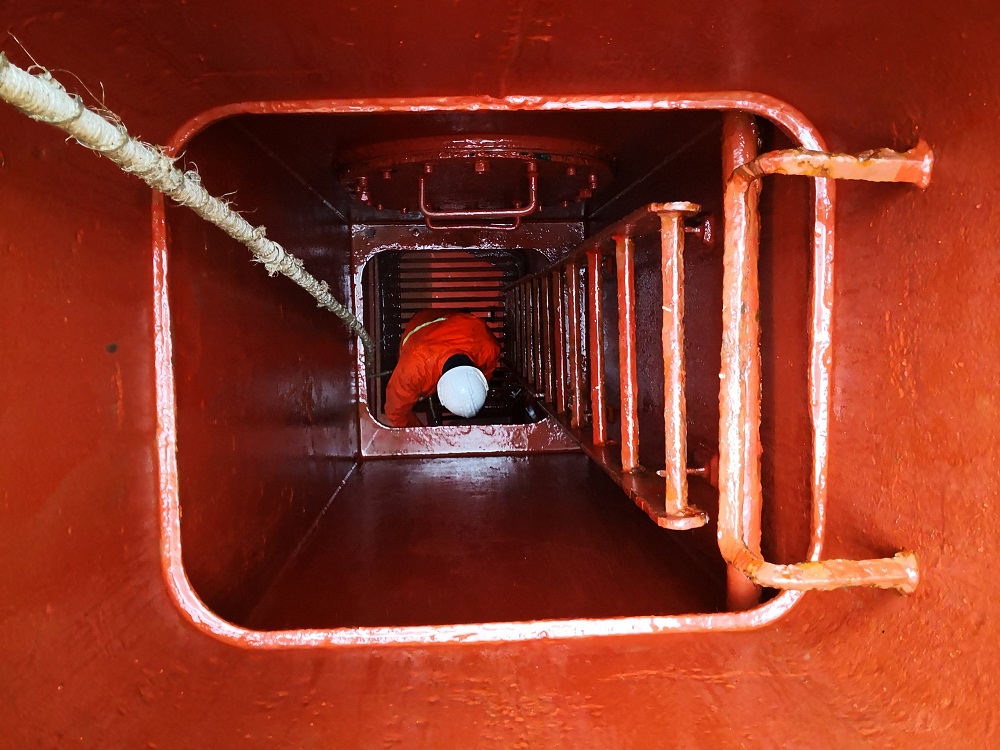A hidden danger that has plagued the maritime industry has once again come into the spotlight. Seemingly innocuous compartments, cargo holds and fuel tanks, vital for storage and operation on board any vessel, have become graveyards for far too many seafarers due to a lack of attention, regulation, and understanding.
A recent surge of enclosed space related deaths on ships has led InterManager to call on the shipping industry to work together to improve safety in these challenging onboard areas. The global ship manager association’s intervention follows the death of three seafarers and five shore workers in accidents in enclosed spaces over seven days in December 2023. This brought the total known deaths last year to 31.
InterManager records these incidents on behalf of the wider shipping community, sharing them with regulators in its role as a member of the International Maritime Organization (IMO). Statistics shared by the organisation reveal that since 1996, 310 people lost their lives in enclosed spaces on ships – 224 seafarers and 86 shore personnel in 197 accidents.
Emphasis on blame overshadows need for reform
Captain Kuba Szymanski, the secretary general of InterManager, who has previously highlighted the stark realities of enclosed space accidents, has redoubled his call for change.
“It is a minefield. We’ve created an unsafe environment, and then we blame people for not navigating it properly. It’s absurd,” he reflects, highlighting the paradox at the heart of maritime safety. His words echo the frustration felt by many within the industry, where the emphasis on blame often overshadows the need for systemic reform.

Captain Kuba Szymanski, Secretary General of InterManager
Moreover, Szymanski sheds light on the ineffectiveness of regulations introduced in 2011, which were intended to curb enclosed space fatalities. “Since 2011, an increase in fatalities in our data is related to the introduction of new IMO introduced regulation. This regulation hoped to eradicate all enclosed space accidents. But it was evident that it didn’t because the shipping industry was barking up the wrong tree,” Szymanski laments. The failure of these regulations to address underlying issues underscores the urgent need for a comprehensive overhaul of safety protocols.
“One of the biggest issues is the flawed design of enclosed spaces. Take the Australian ladders, for instance. They’re like mousetraps, deadly and unnecessary,” Szymanski asserts passionately, underscoring the urgent need for redesign and improved ventilation systems. These ladders are the result of regulations that state a vertical ladder inside a cargo hold be equipped with intermediate horizontal platforms, thus allowing stevedores better access holds to carry out loading or discharging operations.
However, Szymanski argues that the enclosed nature of Australian ladders makes them more difficult for personnel to escape from in the event of an accident. The absence of proper access points and ventilation further exacerbates the risks associated with entering enclosed spaces, turning routine tasks into potential death traps for unsuspecting seafarers.
“In the international regulations, it’s very clear – human beings should not be entering enclosed spaces regularly. Yet, we’re seeing instances where they’re forced to do so due to operational pressures,” Szymanski explains, highlighting the systemic failures that endanger seafarers’ lives. The pressure to meet deadlines and maintain operational efficiency often takes precedence over safety, creating a perilous environment where lives are needlessly put at risk.
“As an industry, we need to have one voice, one approach to safety. Fragmented standards and practices only put lives at risk,” Szymanski emphasises, calling for unity and collaboration across the maritime industry. The lack of consistency in safety protocols and procedures leaves room for confusion and oversight, further compromising the well-being of seafarers.

Where Enclosed Space accidents happen – all shiptyes 1996 to 1 December 2023. Source: InterManager
Collaborative approach
The multifaceted challenges surrounding enclosed space safety in the maritime industry, from regulatory shortcomings to design flaws, show that the issues are complex and often interconnected, requiring a unified and collaborative approach to address effectively. By prioritising safety, fostering collaboration among stakeholders, and reimagining design standards, the maritime industry can mitigate the risks associated with enclosed spaces and ensure the well-being of seafarers worldwide.
The IMO sub-committee relating to the Carriage of Cargoes and Containers is in the process of revising Resolution A.1050(27) to ensure the safety of personnel entering enclosed spaces on ships, with a target to complete this in 2024. Resolution A.1050 (27) concerns the “recommendations for entering enclosed spaces aboard ships”.

Enclosed space accidents by ship type, 1999 to 1st December 2023. Source: InterManager
Elsewhere, organisations such as logistics insurer TT Club Mutual Insurance have published their own risk mitigation strategies. These include the need within the maritime industry to “embody a culture where time and resources are fully aligned with safety”, ensuring that “people inside the space can communicate with those on the outside”, and ventilating an enclosed area before entry and during work activities.
It is evident that a concerted effort is needed to drive meaningful change and enhance safety standards. Considering this, the Royal Institution of Naval Architects has been called upon to play a pivotal role in advancing research and formulating solutions to address fatalities among seafarers in enclosed spaces.
The initiative to engage the expertise of the Royal Institution of Naval Architects underscores the importance of collaboration and interdisciplinary cooperation in tackling complex maritime challenges. By harnessing the collective knowledge and experience of industry professionals, this endeavor seeks to examine technical proposals, identify key areas for improvement, and formulate actionable recommendations to enhance safety standards.
This call for expert volunteers signifies a commitment to a diversity of perspectives, recognising that addressing enclosed space fatalities requires input from a broad spectrum of industry voices. Evidently it is only through the collective efforts of naval architects, engineers, and other industry professionals, that effective measures to mitigate risks and safeguard the lives of seafarers can finally be implemented.
Interest in aiding RINA’s research can be directed to The Naval Architect via editorial@rina.org.uk.




